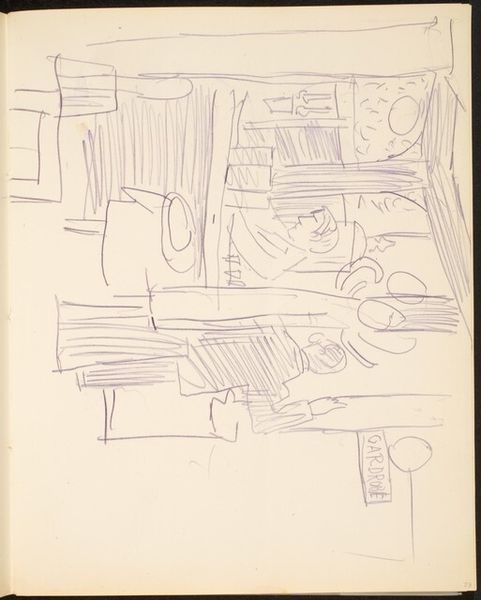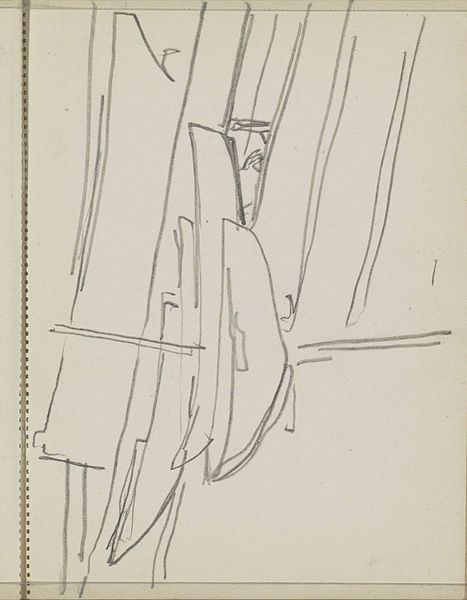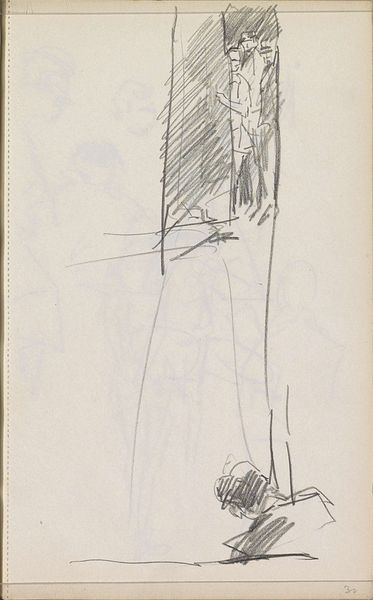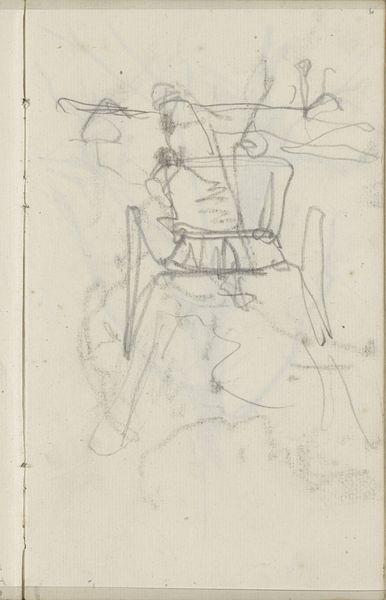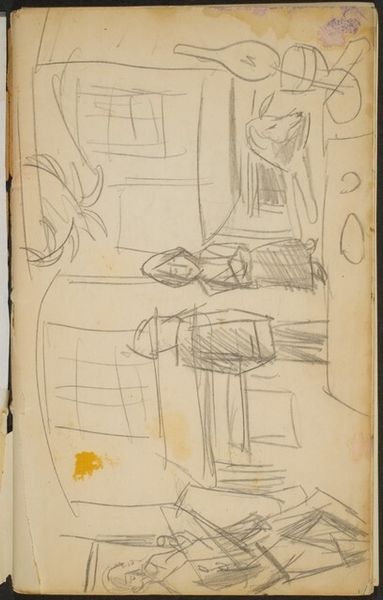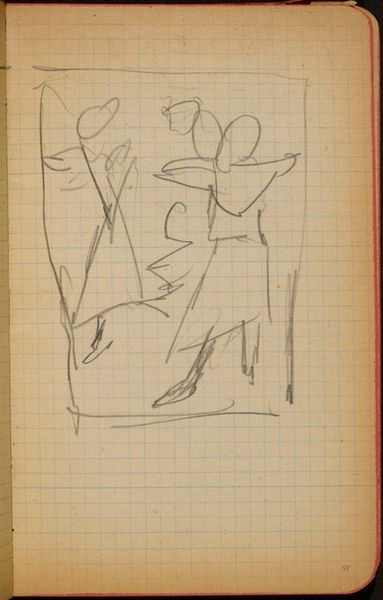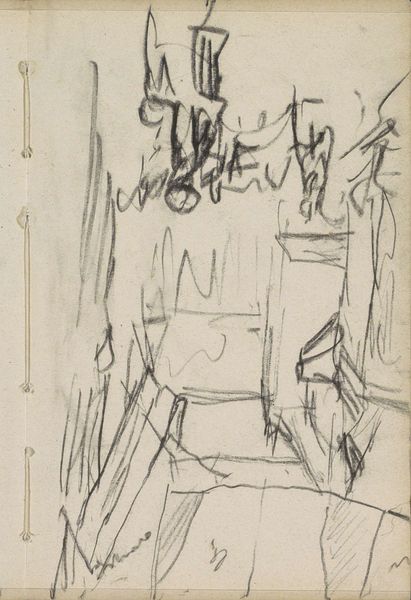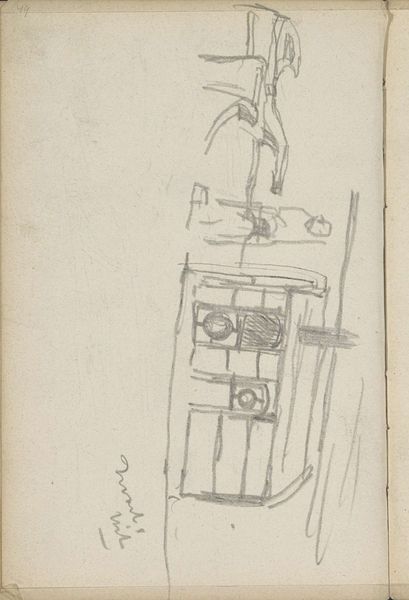![stehender Schubkarren vor Architektur (Wheelbarrow Standing by Architecture) [p. 5] by Max Beckmann](/_next/image?url=https%3A%2F%2Fd2w8kbdekdi1gv.cloudfront.net%2FeyJidWNrZXQiOiAiYXJ0ZXJhLWltYWdlcy1idWNrZXQiLCAia2V5IjogImFydHdvcmtzLzVmYmEzMmMzLWM3ODctNGVkZS1hYmM2LTM3MTkyMDk4ODM5NC81ZmJhMzJjMy1jNzg3LTRlZGUtYWJjNi0zNzE5MjA5ODgzOTRfZnVsbC5qcGciLCAiZWRpdHMiOiB7InJlc2l6ZSI6IHsid2lkdGgiOiAxOTIwLCAiaGVpZ2h0IjogMTkyMCwgImZpdCI6ICJpbnNpZGUifX19&w=1080&q=75)
stehender Schubkarren vor Architektur (Wheelbarrow Standing by Architecture) [p. 5]
0:00
0:00
drawing, pencil
#
drawing
#
imaginative character sketch
#
ink drawing
#
pen illustration
#
pen sketch
#
german-expressionism
#
cartoon sketch
#
form
#
personal sketchbook
#
ink drawing experimentation
#
pen-ink sketch
#
pencil
#
line
#
sketchbook drawing
#
cityscape
#
sketchbook art
Dimensions: page size: 22 x 70.5 cm (8 11/16 x 27 3/4 in.)
Copyright: National Gallery of Art: CC0 1.0
Curator: This brisk ink and pencil sketch, attributed to Max Beckmann, bears the title "stehender Schubkarren vor Architektur," or "Wheelbarrow Standing by Architecture." Editor: My first impression is that of tentative forms, as if the scene is emerging from a fog. There's a lightness of touch in the line work, particularly within the wheel itself. Curator: Given that Beckmann belonged to the generation of artists profoundly marked by the trauma of World War I and the subsequent social upheavals in Germany, I'm wondering if the subject matter implies a sense of precariousness—perhaps a comment on the reconstruction efforts. Editor: I agree; that uncertainty resonates visually. Consider how the architectural elements behind the wheelbarrow appear incomplete, almost skeletal. The rough, almost childlike lines might suggest the fragility of human endeavors. But notice the wheelbarrow's central placement—it's not subservient to the architecture. Curator: Yes, but think of how Beckmann used such objects within his overall artistic project to expose the social conditions around him. He was based in Frankfurt during Germany’s interwar Weimar Republic, a moment where people were doing anything to rebuild after immense national trauma. Editor: Indeed. Let’s consider the visual rhythms created by the intersecting lines, and that contrast in style and scale that is suggestive to how we interpret what each part represents. It is very personal. The wheel’s circular form acts as a focal point amid the surrounding angles. The overall effect is strangely disquieting. Curator: And certainly we must account for Beckmann’s association with the New Objectivity movement, which strove to portray a cynical and disillusioned interwar society, documenting harsh truths without romanticism. But is there also something tender being captured here through that initial sketch? Editor: I concur! It seems almost hopeful. So let’s consider its open, fleeting nature that encourages imaginative engagement beyond that historical narrative. Curator: Considering it anew, this sketch now acts as an allegory of both past trauma, future promise and artistic form for me.
Comments
No comments
Be the first to comment and join the conversation on the ultimate creative platform.


